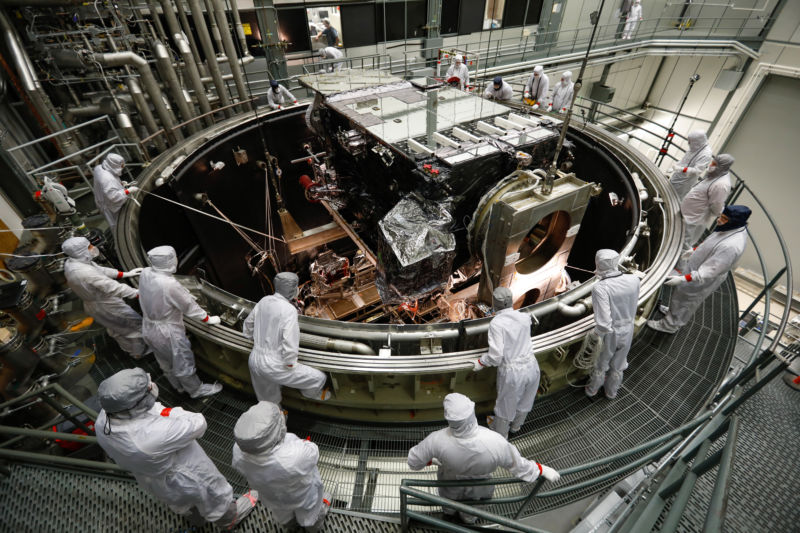May 23, 2018 at 12:32PM
via Ars Technica

The US National Oceanic and Atmospheric Administration released some bad news today: the GOES-17 weather satellite that launched almost two months ago has a cooling problem that could endanger the majority of the satellite’s value.
GOES-17 is the second of a new generation of weather satellite to join NOAA’s orbital fleet. It’s predecessor is covering the US East Coast, with GOES-17 meant to become “GOES-West.” While providing higher-resolution images of atmospheric conditions, it also tracks fires, lightning strikes, and solar behavior. It’s important that NOAA stays ahead of the loss of dying satellites by launching new satellites that ensure no gap in global coverage ever occurs.
The various instruments onboard the satellite have been put through their courses to make sure everything is working properly before it goes into official operation. Several weeks ago, it became clear that the most important instrument—the Advanced Baseline Imager—had a cooling problem. This instrument images the Earth at a number of different wavelengths, including the visible portion of the spectrum as well as infrared wavelengths that help detect clouds and water vapor content.
The infrared wavelengths are currently offline. The satellite has to be actively cooled for these precision instruments to function, and the infrared wavelengths only work if the sensor stays below 60 K—that’s about a cool -350°F. The cooling system is only reaching that temperature 12 hours a day. The satellite can still produce visible spectrum images, as well as the solar and lightning monitoring, but it’s not a glorious next-gen weather satellite without that infrared data.
According to NOAA’s release, the agency is investigating the source of the cooling problem and hoping it can find some sort of fix that improves the system’s performance. But NOAA also notes that “if efforts to restore the cooling system are unsuccessful, alternative concepts and modes will be considered to maximize the operational utility of the [Advanced Baseline Imager].”
The “make the best of a bad situation” scenario is far from ideal, though. If GOES-17 doesn’t fully come online this fall, as planned, it’s not like US weather forecasters will be in the dark—the satellites currently covering that portion of the globe are in good shape. That said, GOES-17 was set to be a shiny new toy for forecasters, and any hitch in the satellite succession plan is potentially costly. So here’s hoping GOES-17 can just chill.